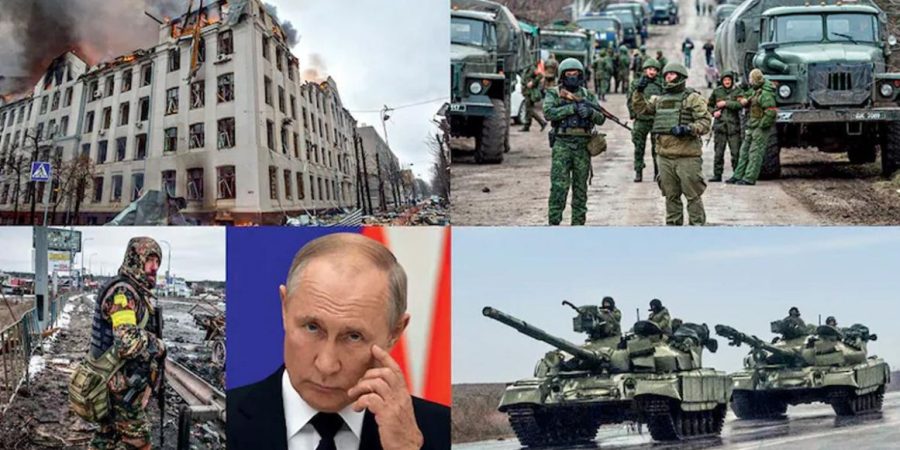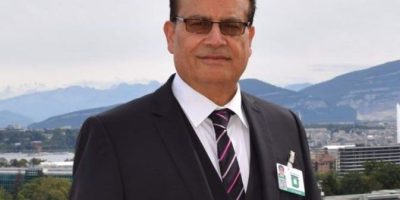Unraveling the Layers: Understanding the Russia-Ukraine Conflict

By: Bisma Farukh
Russia and Ukraine’s conflict is a complex tale with roots in geopolitics, history, and the struggle for national sovereignty. A complex web of past grievances, ethnic tensions, and geopolitical ambitions lies beneath the surface of military exercises and diplomatic negotiations. It is necessary to examine the political, cultural, and historical aspects of the Russia-Ukraine war in order to fully understand it.
Historical Context: Russia and Ukraine have had centuries-long relations characterized by alliances, wars, and dominance. Because of its valuable trade routes, access to the Black Sea, and lush land, Ukraine has long been a strategically important region sought after by other regional powers. The relationship is further complicated by the legacy of Soviet rule, as Ukraine gained independence after the Soviet Union collapsed in 1991 but retained close political and economic ties to Russia.
Crimean Annexation and Eastern Ukraine Conflict: The conflict’s contemporary phase began in 2014 when Russia annexed Crimea. Following the Euromaidan protests in Ukraine, which resulted in the removal of pro-Russian President Viktor Yanukovych, this action was taken.
International criticism of the annexation was voiced, but Russia defended its actions by citing the need to protect ethnic Russians and its strategic interests in Crimea, which is home to an important naval base.
In the Donetsk and Luhansk regions of eastern Ukraine, pro-Russian separatists simultaneously proclaimed their independence, setting off a bloody conflict with Ukrainian government forces.
Tensions increased after accusations that Russia was providing military assistance to the separatists. This resulted in a long-lasting conflict that cost a great deal in terms of both lives lost and money.
Geopolitical Chessboard: Rivals between the West and Russia for influence in Eastern Europe are reflected in the conflict as well as larger geopolitical rivalries. As perceived by Moscow as an intrusion on its sphere of influence, Ukraine’s ambition for stronger connections with the European Union and NATO has been a source of conflict. Russia was viewed as demonstrating its strength when it annexed Crimea and was cautioning the West not to expand too much.
As a test of the West’s dedication to democratic and territorial integrity ideals, backing Ukraine has taken on a life of its own. The international community has condemned aggression and the violation of sovereignty, and this is demonstrated by the sanctions placed on Russia in response to its actions in Ukraine.
Ethnic and Cultural Dynamics: Disparities in ethnicity within Ukraine, specifically between speakers of Russian and Ukrainian, have also exacerbated tensions. In terms of language and culture, some areas are more closely aligned with Russia, while others strongly identify as Ukrainian. Exacerbating societal fractures and impeding efforts at reconciliation, this divide has been used by both internal and external actors to further their agendas.
Humanitarian Toll: It is critical to remember the suffering caused by the conflict despite the geopolitical gamesmanship and diplomatic bluster. Communities have been uprooted, families have been shattered, and thousands of people have died. A peaceful solution is desperately needed, as evidenced by the infrastructure damage and economic hardship that have exacerbated the humanitarian crisis in eastern Ukraine.
Pathways to Peace: There are still ways to resolve the conflict between Russia and Ukraine, despite its complexity and difficulties. De-escalation and negotiation frameworks are provided by diplomatic initiatives like the Minsk agreements. But for them to be implemented successfully, there needs to be sincere political will and dedication on the part of all parties.
Communities that are divided can also benefit from grassroots dialogue and reconciliation efforts that promote mutual understanding and healing. People-to-people interactions, cultural exchanges, and civil society initiatives can unite disparate groups and encourage tolerance and cohabitation.
In the end, a peaceful coexistence commitment, respect for international law, and acknowledgement of each other’s legitimate interests are necessary for resolving the RussiaUkraine conflict. A more stable and prosperous future for both Russia and Ukraine can only be realized via communication, compromise, and concerted efforts to heal the wounds of the past.
Conclusion: The conflict between Russia and Ukraine is a multifaceted and intricate phenomenon that has historical roots, geopolitical implications, and humanitarian ramifications.
Issues of sovereignty, territorial integrity, and geopolitical rivalry have gained prominence as a result of the annexation of Crimea and the ongoing conflict in eastern Ukraine. Nevertheless, despite the chaos, there are hints of hope for a calm conclusion.
Cooperation between grassroots and diplomatic efforts is necessary to achieve peace. A sincere commitment and cooperation from all parties involved are necessary for diplomatic initiatives like the Minsk agreements to provide frameworks for negotiation and de-escalation. A more peaceful future can be established by encouraging communication and harmony amongst divided communities, which can aid in bridging racial and cultural gaps.
The Russia-Ukraine conflict is ultimately a human tragedy with far-reaching consequences rather than just a geopolitical chess match. The welfare and goals of those caught in the crossfire must be given top priority in the pursuit of peace, giving them the opportunity to start over and rebuild their communities and lives. The only way to mend the scars of the past and ensure a better future for Russia and Ukraine is via communication, cooperation, and joint efforts.
By: Bisma Farukh
Department: International Relations
Muslim Youth University, Islamabad.
Related News

The Enemy Within — and the American Habit of Fixing It
Qamar Bashir War Secretary Pete Hegseth’s recent address to defense-industry leaders began not with warningsRead More

A Defining Year for Pakistan
by Muhammad Mohsin Iqbal As the final days of 2025 quietly recede and the firstRead More


Comments are Closed